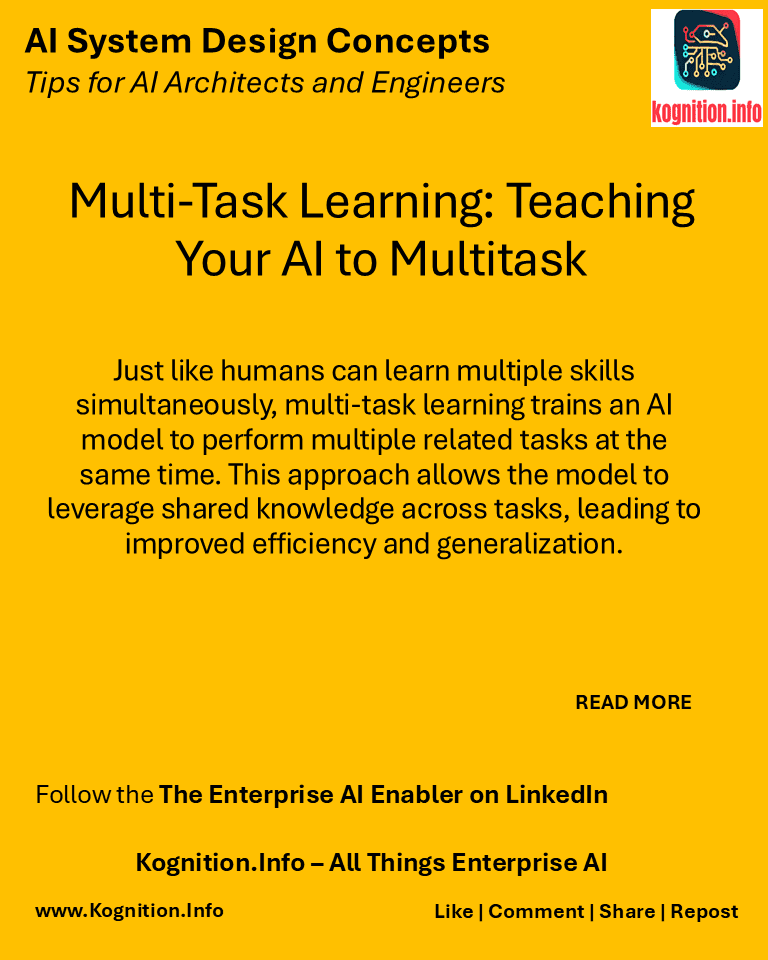
Just like humans can learn multiple skills simultaneously, multi-task learning trains an AI model to perform multiple related tasks at the same time. This approach allows the model to leverage shared knowledge across tasks, leading to improved efficiency and generalization.
Use cases:
- Computer vision: Training a model to simultaneously detect objects, segment images, and estimate depth.
- Natural language processing: Building a model that can perform sentiment analysis, named entity recognition, and question answering.
- Autonomous driving: Developing a model that can simultaneously detect objects, predict trajectories, and plan paths.
How?
- Define related tasks: Identify tasks that share common features or underlying patterns.
- Design the model architecture: Create a model with shared layers for common features and task-specific layers for individual tasks.
- Define the loss function: Combine losses from each task into a single multi-task loss function.
- Train the model: Train the model on all tasks simultaneously, allowing it to learn shared representations.
Benefits:
- Improved efficiency: Reduces training time and resources compared to training separate models for each task.
- Enhanced performance: Leveraging shared knowledge can improve accuracy on individual tasks.
- Better generalization: Multi-task learning can lead to models that are more robust and generalize better to new data.
Potential pitfalls:
- Task conflict: If tasks are too dissimilar, they may interfere with each other’s learning.
- Negative transfer: Knowledge from one task may negatively impact performance on another task.
- Complexity: Designing and training multi-task models can be more complex than single-task models.
